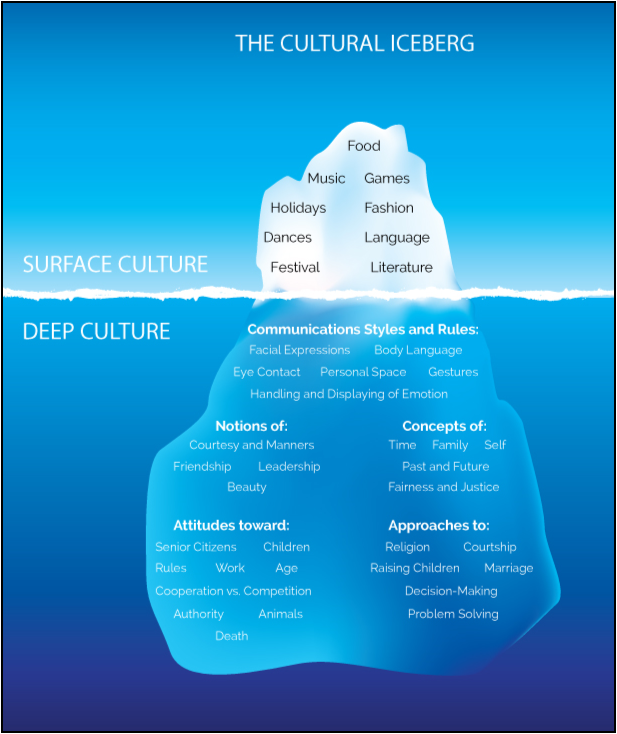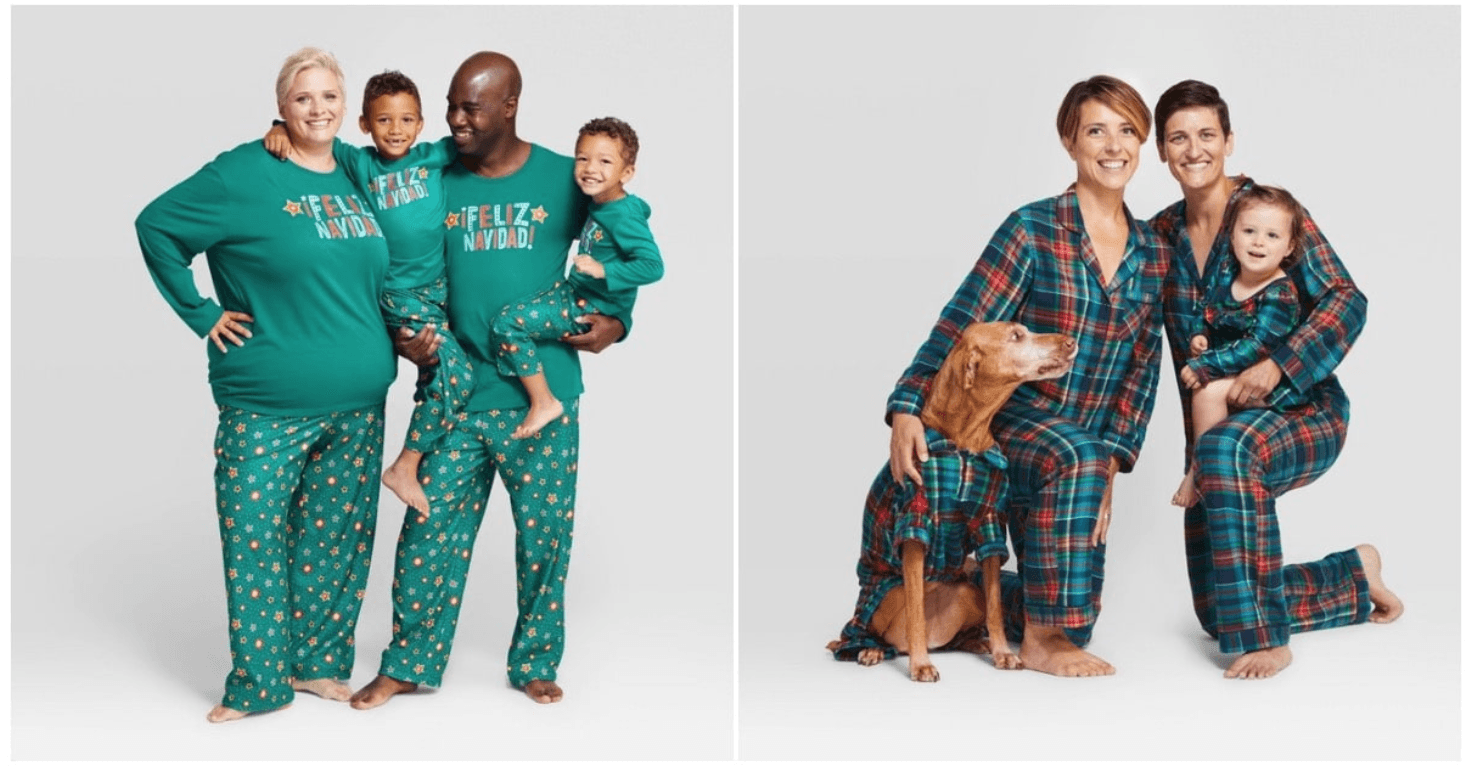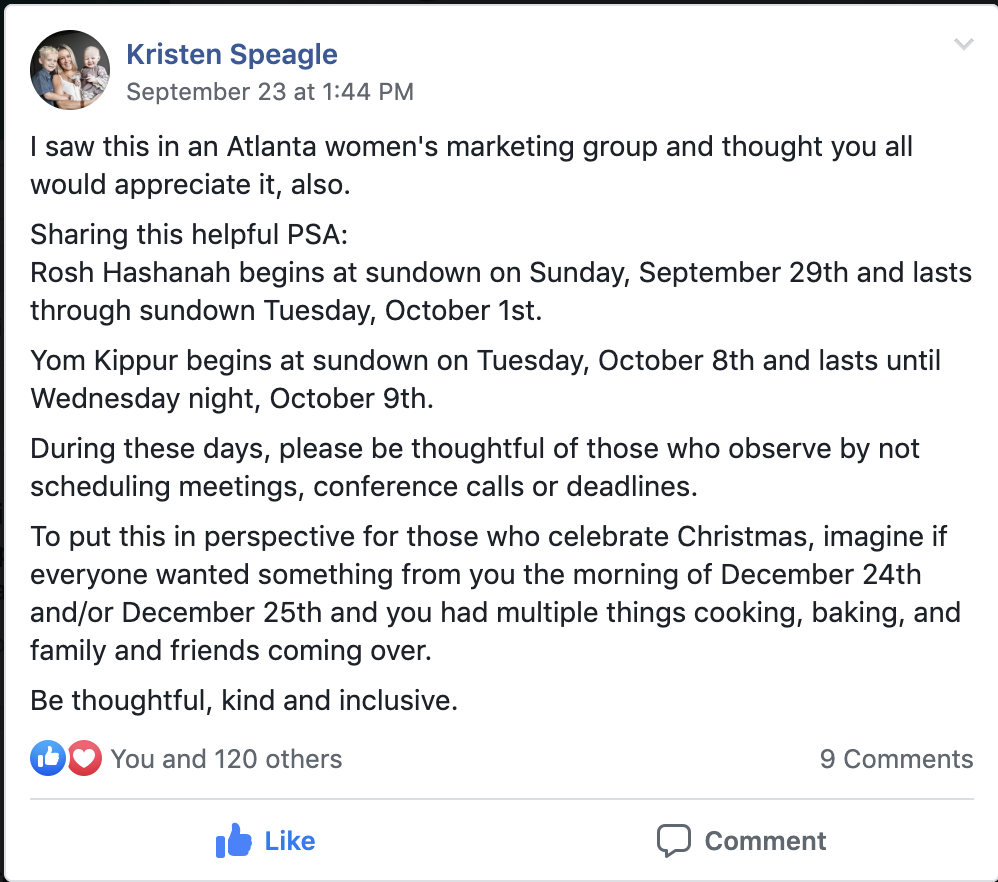Join 40,000+ sales and marketing pros who receive our weekly newsletter.
Get the most relevant, actionable digital sales and marketing insights you need to make smarter decisions faster... all in under five minutes.
How to make your year-end holiday campaigns more inclusive (dos and don'ts)

By John Becker
Oct 24, 2019

With the holiday season fast approaching (or already in full-swing, depending on who you ask), it's important to remember the diversity represented in our companies and by our customers. Statistics show that people gravitate towards media that feels representative.
If you're practicing They Ask, You Answer principles, you are likely doing most (or all!) of your marketing in-house. If you're finding yourself overwhelmed by the prospect of producing holiday ads that can reach broad demographics, you're not alone. IMPACT's own Stephanie Baiocchi presented at a recent HubSpot User Group in Chicago about inclusive holiday campaigns.
Stephanie works at IMPACT as our director of community and events, and she wears as many hats as that title suggests.
Considering her wide range of interests and expertise, I asked for her thoughts about holiday campaigns.
Getting started with holiday campaigns
Me: Our topic for today is creating inclusive holiday campaigns. Can you start with talking about why this is on your mind?
Stephanie Baiocchi: So, first of all, the holidays are coming up. When I say the holidays, I mean the typical most popular winter Christian American holidays, but with the winter season comes a lot of holidays and many traditions.
That's what inspired our recent Chicago HubSpot User Group meetup.
For this HUG, we decided to do this same topic, “how to create inclusive holiday campaigns,” because we figured it's something on everyone's mind as we're entering into October.
Me: We're nearly through October right now, Steph!
Stephanie: Well, yes, we're nearly through October. As we were planning this HUG, it was still September. Wow yeah, it’s late-October now. Terrifying.
We decided to also do a recap of INBOUND, HubSpot's annual event that was back in September, and then do this topic of inclusive holiday campaigns. So with that, we recapped the keynotes from INBOUND by Dharmesh and Brian, the co founders of HubSpot.
Dharmesh's keynote was really interesting to me for two reasons.
One was that he talked about how, if he could go back in time to the beginning of HubSpot and change one thing, he would have doubled-down on creating a more diverse team.
Because with the lack of diversity in his team, he had a lack of diversity in perspective and he had a lot of unconscious bias because they of that, and they were building things not really thinking outside of their own mental bubble.
That was really cool to hear him say.
The second was that he talked about the things that businesses fear when they're trying to grow better (like inclusion). Those things that we fear maybe incorrectly and the things that we maybe should fear instead.
The story that tied all of these challenges and these fears together was his fear of water.
Dharmesh actually couldn't swim. When his son, Sohan, started taking swimming lessons, however, he wanted his dad to come in the pool and swim with him.
Dharmesh talked about getting in the pool with Sohan and saying how he was still afraid of water and he didn't want to swim.
And Sohan said, "Well dad, you don't have to swim. You just have to dunk your head." And so Dharmesh was scared but he dunked his head underwater and then he came up and he said, "Okay, I did it. I dunked my head."
And Sohan said, "Okay, do it again."
Eventually, Dharmesh was able to swim across the pool, and he said he overcame this fear by doing a little bit at a time. Just dunking his head.
And at our HubSpot User Group meetup, that was how we led into this topic of inclusive holiday campaigns and being more inclusive in your marketing.
It can seem a little overwhelming at first. There's a lot that we don't know if we're not in a diverse team or we don't have a lot of education on these topics, so it can be a little overwhelming and scary.
Well, we don't have to do it all at once. We don't have to celebrate every single holiday. We just have to dunk our heads.
So that's what's been on my mind.
Why being diverse and inclusive matters
Me: Can you talk about why inclusive representation is so important in marketing?
Stephanie: I think that when people hear that question, they might think the answer is inherently political, and it's certainly not.
The fact of the matter is people want to see themselves in the things that they use or buy.
Whether it's their beliefs, people who look like them, lives like theirs — the world is a diverse place. And, despite what we might think, there are a lot of people out there who are not like us, and people want to see themselves in the marketing that's in front of them.
They want to see diversity, in general, because that's what the world looks like.
More and more young people are moving past wanting this perfectly filtered, perfectly staged version of the world. They want reality — and the reality is that our world is diverse.
In fact, 70% of millennials are more likely to choose a brand over another if it demonstrates inclusion and diversity, even if it's not showing them people like them.
As a millennial, I can speak to that fact. I want to see a company that is thinking outside its own bubble.
Me: I would imagine there are companies who are afraid of offending. They might be uncertain about political correctness and are hindered by their fear of being inadvertently offensive. What advice would you give?
Stephanie: The best advice I can give is of course the hardest: This is why it's so important to have diverse teams. If you can get a more diverse team, you're going to have different perspectives.
Until you have that, I would do your research and learn what you can about the things that you're trying to approach and remember that, again, you're just dunking your head. You don't have to dive in head first.
At IMPACT, we know that we don't have a very diverse team in certain aspects, so we reached out to some friends and some family and asked for their advice when we were creating a graphic for a holiday none of us celebrated.
In terms of just doing your research, there's this graphic of an iceberg and you see just the tip of the iceberg poking out of the top of the water, as icebergs do.
 https://www.reddit.com/r/coolguides/comments/d2nz7m/cultural_iceberg_your_guide_to_surface_and_deep/
https://www.reddit.com/r/coolguides/comments/d2nz7m/cultural_iceberg_your_guide_to_surface_and_deep/
It shows the superficial things we see when we think about these holidays or we think about culture, things like food, music, dances, fashion games, all of that, language, literature.
That's at the surface level.
But if we can do our research and learn and understand more of the deep culture and understand how these holidays came to be, why this fashion is the way it is, why we eat certain foods at certain holidays, we'll be better equipped to create marketing campaigns and use language that not only doesn't offend people, but actually feels really good because we understand.
Where brands go wrong with inclusive marketing
Me: What are some often overlooked elements of inclusive marketing?
Stephanie: I think the things that we overlook are some of the simple visual elements in campaigns.
Things like using images that incorporate multiple races and using language that is sensitive to several genders and using images and language that's inclusive of different concepts of family.
 Source: Target
Source: Target
I think that holidays are typically family-oriented, so you might say things like, "When the family all gathers around the dinner table."
Sometimes there's two moms or two dads, sometimes there's no parents and it's just friends.
Relationships look different around the holidays too, so not assuming that everyone's version of coming together for the holidays is the same.
I also think something that's really commonly overlooked is not just being inclusive of race, religion, gender and sexuality, but also of disability.
You can be inclusive of disability in the images that you use. If you're using stock images, keep in mind what the people in those stock images look like.
This ad here is based on the story of Rudolph, and you can hear the music in the background the whole time. It’s really thoughtful and well done.
It’s also important to remember to make your content is accessible.
Having captions and being considerate if you're using a lot of red and green. Even if you know that your audience celebrates Christmas, if someone's colorblind, that's just a lot of gray and gray.
So there's a lot to think about there, especially on social media with image alt text and captions on videos, but a little can go a long way.
Getting holiday campaigns right
Me: So, how do we do holiday campaigns right?
Stephanie: First off, just reading content like this and looking at some examples really helps.
I think it helps to think backwards a little bit.
Think about your launch day. When are you launching this campaign? What elements go into it?
For emails and ad copy, remember to build in a little bit of extra time for approvals, because if this is something that has to go through multiple people, it might take longer — maybe even more so if you're taking your first steps into being more inclusive.
People might have some questions. Ideally, you took time to do research and to learn, and now you have to teach people at your organization a little bit.
Identify your biases, your blind spots, and ask people who are not like you, which could be people on your team.
Maybe Bill in HR celebrates some holidays that you don't. Even if he's not on the marketing team, go ask Bill what he's seeing and what he would like to see.
Think about your imagery really carefully, because that's something that’s easy to overlook.
Maybe a lot of your audience is based in the southwestern part of the United States where it's really warm.
Snowflakes and hot chocolate and people bundled up and scarves might not actually be super relatable to people in a warmer climate. Maybe melting snowman in the sand would actually resonate really well.
Then as you're building your campaigns, you have your images, you have your video, think about the deaf and hard-of-hearing community.
Think about colorblind, blind, low-vision people. What's that going to look like? Do you have alt texts? Consider the best a color palette.
Then, I would say talk with your sales team about their individual one-to-one communications.
Typically speaking, sales teams tend to send emails around the holidays like, "I know it's going to get busy with the holidays coming up, so we should probably get this agreement signed." Or, "Before you sit down to the dinner table with your family this weekend..." and that's making a lot of assumptions that everyone they're talking to is celebrating these holidays.
Also, it can be as simple as just not assuming someone's gender.
Even those neutral names like Jamie or Chris. And that's not exclusive to holidays — it's something that we can absolutely do year round to be more inclusive.
Then for your marketing team, look at your messaging, your images, your copy, and then communicate that to your designers and developers.
Just because your team decides that we're not going to make everything red and green, your design team might not know that if you don't clearly communicate that to them.
Me: As you said, a lot of these techniques are important throughout the year.
Stephanie: Yes, these are absolutely important all year long. And I think if we remember what we said at the beginning about how this can be scary is important.
If it's a little scary for marketing and creative, it's very scary for leadership. And so the holiday season is a great time to start trying some of these things, to dunk your head a little bit.
Then, that paves the way for this to become something that you do all year. Your images should be inclusive. Your videos should have captions. You should not assume gender. That should happen all year long.
Also, there are holidays all year round, not just your typical dominant American holidays. There's a lot happening all year, so building a calendar based on what your ideal personas are doing all year is a great way to help with your marketing.
I know we recently launched a webinar that happened to be on Yom Kippur. We reminded people that we would have the recording available if they weren't able to join us live. We learned it’s worth stating right on the page, with the “recording will be available” text that we know it’s Yom Kippur. Just to show that we do care and we are aware.
I think the most interesting thing I heard recently, a friend shared in a Facebook group: there are some “non-traditional” holidays where families do come together and sit down for a meal, maybe family's visiting.

Most of us get Christmas Eve and Christmas Day off work. Imagine if all of a sudden everybody wanted something from you on December 25th?
You had a lot of things cooking that you didn't want to burn and you're trying to entertain your in-laws but also so and so wants a report by 10AM. That would be super stressful.
Being inclusive and thinking about what it's like for other people on these holidays — it's more than just throwing something up on your Instagram that says happy holidays and it has snowflakes instead of a Christmas tree. It’s also being considerate of people’s time, experience, and context. And that’s something that you can do all year.
Free Assessment: